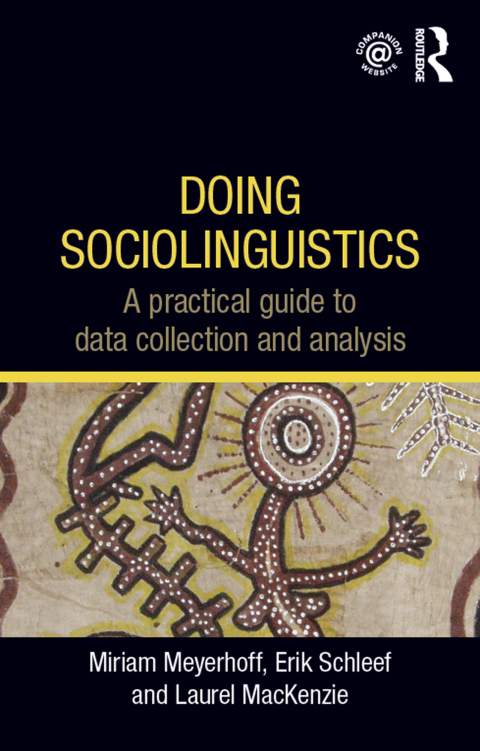Description
Efnisyfirlit
- Cover Page
- Half Title page
- Title Page
- Copyright Page
- Contents
- Figures
- Tables
- Preface and user guide
- Acknowledgements
- Part I Data collection
- 1 Finding a topic
- Formulating a research topic
- Career
- Idea
- Observation (‘Not found here’)
- Assessing conflicting claims
- Testing theory
- Further research: jumping to conclusions
- Motivating your research topic
- Drawing up a research plan
- Exercises
- Exercise 1 – finding a topic and motivating it
- Exercise 2 – finding a topic based on observation and/or theory
- Quantitative analysis
- Qualitative analysis
- Rugby training sessions
- Exercise 3 – identifying further research options
- Exercise 4 – identifying further research options
- References
- Further reading
- 2 Sample design and the envelope of variation
- What exactly am I looking at?
- Defining variables and variants
- Defining the envelope of variation
- How much data do I need?
- Exercises
- Exercise 1
- Exercise 2
- References
- Further reading
- 3 Ethics and archiving
- Informed consent when recording
- Useful resources you can draw on
- Archiving and long-term storage
- Exercises
- Note
- References
- Further reading
- 4 Sampling techniques and gaining access to speakers
- Gaining access to speakers and entering the community
- Samples and sampling techniques
- Random sampling versus proportionate stratified random sampling
- Judgement sampling
- Social networks and communities of practice
- Exercises
- Exercise 1
- Exercise 2
- Exercise 3
- References
- Further reading
- 5 Interviews as a source of data
- Why interview?
- What is an interview?
- Reading aloud
- Exercises
- Exercise 1
- Exercise 2
- Exercise 3
- References
- Further reading
- 6 Naturally occurring, spontaneous speech as a source of data
- Recording spontaneous speech
- Ethnographic research
- What is ethnography and what kind of data does it collect?
- Goals of ethnographic work
- How to do ethnographic research
- What to observe
- Exercises
- Exercise 1
- Exercise 2
- References
- Further reading
- 7 Corpora as a source of data
- What is a corpus?
- Why would I want to use a corpus?
- How do I use a corpus?
- Exercises
- Exercise 1
- Exercise 2
- References
- Further reading
- 8 Written surveys and questionnaires as a source of data
- Questionnaires in sociolinguistics
- Limitations and opportunities
- Developing questionnaire items
- Questionnaire structure
- Testing, administering and processing questionnaires
- Exercises
- Exercise 1
- Exercise 2
- Exercise 3
- References
- Further reading
- 9 Studying perceptions and attitudes
- Direct methods
- Indirect methods
- How it’s done
- Manipulation of variables
- Perceptual dialectology
- Collecting pre-existing speech or text
- Exercises
- Exercise 1
- Exercise 2
- References
- Further reading
- Part II Data analysis
- 10 Transcription
- End goals: What are you transcribing for?
- Orthography and punctuation
- Transcribing gesture and eye gaze
- Good guidelines: Systematising your transcription
- Dodging ‘blowback’: How your transcript will be read
- Exercises
- Exercise 1
- Exercise 2
- References
- Further reading
- 11 Identifying, coding and summarising your data
- The hunting of the variable
- Code once and code a lot
- Getting summary statistics
- Exercises
- Exercise 1
- Reported mimetic quote
- Reported linguistic quote
- Reported speech
- Reported thought
- References
- Further reading
- 12 Analysing your data
- Preliminaries
- Terminology
- Summarising a categorical dependent variable
- Summarising a continuous dependent variable
- Statistical significance
- Testing a categorical dependent variable for statistical significance
- Testing a continuous dependent variable for statistical significance
- Exercises
- Exercise 1
- Exercise 2
- References
- Further reading
- 13 Presenting your data
- What should a graph do?
- Clarity
- Honesty
- Eliminating redundancy
- Now that you know what not to do…
- Exercises
- Exercise 1
- Exercise 2
- References
- Further reading
- 14 Analysing multiple independent variables
- Cross-tabulating two independent variables to check for interactions
- Graphing your cross-tabulation
- Checking your cross-tabulation for significance
- Multivariate analysis
- Why should we use multivariate analysis?
- What does multivariate analysis tell us, and how does it do so?
- Exercises
- Exercise 1
- Exercise 2
- References
- Further reading
- 15 Mixing qualitative and quantitative analysis
- A word on terminology
- Combining quantitative and qualitative: Learning by example
- Exercises
- Exercise 1
- Exercise 2
- References
- Further reading
- 16 Writing up your research
- What is a research paper?
- Introduction
- Literature review
- Methods
- Results
- Discussion and conclusion
- Reference list and appendix
- Revise, edit, choose a title and write an abstract
- Exercises
- Exercise 1
- Exercise 2
- References
- References
- Further reading
- Index







Reviews
There are no reviews yet.